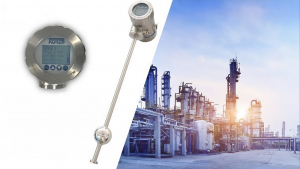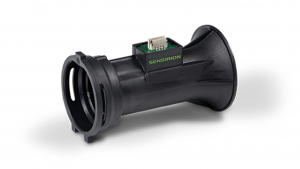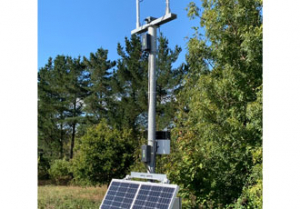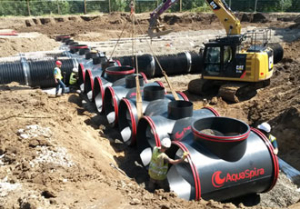Compact, Digital Motion Controller for Nanopositioning
7th January 2011
The single channel E-709 piezo controller from Physik Instrumente (PI) has been already introduced for piezo-based positioners and scanners which use strain sensors. Since the majority of the nanopositioning systems from PI employ such sensors, the E-709 allows significantly lower system costs in comparison to the digital controllers offered up until now.
The biggest differences between the digital and analog controllers are that you can influence all parameters directly through calculation algorithms using software commands. The controller works with linearization algorithms which improve the positioning accuracy of the piezo system to below 0.01%.
When supplying commands using the digital SPI, USP and RS-232 interfaces, the digital technology allows the setting of motion and control parameters and the programming of digital I/Os or the analog exit via software.
The amplifier of the E-709 provides 5 W output power (10 W for < 5ms) and is designed so that classic nanopositioning systems with travel ranges of up to 200 µm with an average scanning frequency of up to 100 Hz can be operated. Systems that fulfill these requirements are, for example, the P-620 PIHera linear stage and the P-721 and P-725 objective scanners of the PIFOC® series.
Optional text boxes:
New Interface for Real-Time Commands
The serial SPI interface with up to 25MBit/s is new. With this interface it is possible to supply the commands for the voltage or position value for each control cycle, the controller is virtually supplied with commands in real time. The data format can be chosen using parameters: Floating-point values or fixed-point values with a variable bit width. This is how the user can address the E-709 of his application.
As is usual for PI, not only are the PIMikroMove and NanoCapture user software supplied, but also LabVIEW drivers and DLLs for the programming with Windows or LINUX.
What is important for applications in microscopy, is the compatibility to software platforms such as µManager, MATLAB or Metamorph.
Capacitive Sensors Improve the Accuracy
Capacitive sensors offer an improved resolution, linearity, and stability, compared to the strain sensors supported by the E-709 until now. They measure the position of the moving platform without contact and directly, with this it is possible for parallel kinematic systems to measure in a number of degrees of freedom at the same time. On the other hand, they are not particularly more expensive than the indirectly measuring strain sensors. This is why, PI equips many of its positioning systems with capacitive sensors. In how far the possibilities of capacitive sensor in the system can be exploited, depends largely on the controller.
OEM Versions Reduce System Costs
The E-609 controller board uses a digital controller which can be optimized using software and the USB service interface. Compared to completely analog units, the integrated digital linearization methods achieve considerably better linearization values. The position is supplied using an analog interface, the scope of the functionality has been diminished in comparison to the E-709.
Self-locking, Non-Magnetic and Easy to Integrate:
Piezo-Based Linear Drive for Automation Technology
Linear direct drives have advantages over rotating electric motors for rectilinear motions in automation technology because the latter always have to use a spindle to convert the driving force into translational motion. An often undesirable aspect of conventional linear motors is that they are not self-locking and thus require holding currents which are associated with heat dissipation, high energy consumption and “positional jitter”. Piezo-based linear drives offer a solution here.
Physik Instrumente (PI) of Karlsruhe has paid heed to the requirements of modern automation technology and now offers a versatile, scalable piezo-based linear drive (picture) which has drive forces up to 10 N, velocities up to 0.5 m/s and travel ranges of several tens of 10 mm. A piezo-ceramic actuator oscillating with ultrasonic frequencies is preloaded against a rod with linear guidance. The oscillation profile of the actuator then produces the forward and backward motion of the drive. The ceramic is preloaded against the rod and thus keeps it in its ‘at rest’ position when powered down. Unlike electromagnetic linear motors, the piezo-based drive does not require any energy for this, no heat is dissipated and the position is maintained with a high degree of stability. During positioning operations, the piezo-based linear drive with optical linear encoder achieves an accuracy of around 10 µm. Moreover, in contrast to electromagnetic linear drives, the piezo-ceramic actuator does not generate any interfering magnetic fields when in operation.
The piezo-based linear drive has a matching controller with pre-integrated driver electronics to generate the ultrasonic oscillations; both controller and linear drive are designed for industrial applications. This creates an attractively priced linear drive system which is also easy to integrate into the application. The controller has a 100 mm wide and 160 mm long eurocard which can be controlled via an RS232 interface, CAN or an analog input, as desired, for velocity control or external operation via joystick, for example. The 32-pole multipoint connector can easily be connected up by means of adapter modules or screw terminals when the control cabinet is being installed.
When supplying commands using the digital SPI, USP and RS-232 interfaces, the digital technology allows the setting of motion and control parameters and the programming of digital I/Os or the analog exit via software.
The amplifier of the E-709 provides 5 W output power (10 W for < 5ms) and is designed so that classic nanopositioning systems with travel ranges of up to 200 µm with an average scanning frequency of up to 100 Hz can be operated. Systems that fulfill these requirements are, for example, the P-620 PIHera linear stage and the P-721 and P-725 objective scanners of the PIFOC® series.
Optional text boxes:
New Interface for Real-Time Commands
The serial SPI interface with up to 25MBit/s is new. With this interface it is possible to supply the commands for the voltage or position value for each control cycle, the controller is virtually supplied with commands in real time. The data format can be chosen using parameters: Floating-point values or fixed-point values with a variable bit width. This is how the user can address the E-709 of his application.
As is usual for PI, not only are the PIMikroMove and NanoCapture user software supplied, but also LabVIEW drivers and DLLs for the programming with Windows or LINUX.
What is important for applications in microscopy, is the compatibility to software platforms such as µManager, MATLAB or Metamorph.
Capacitive Sensors Improve the Accuracy
Capacitive sensors offer an improved resolution, linearity, and stability, compared to the strain sensors supported by the E-709 until now. They measure the position of the moving platform without contact and directly, with this it is possible for parallel kinematic systems to measure in a number of degrees of freedom at the same time. On the other hand, they are not particularly more expensive than the indirectly measuring strain sensors. This is why, PI equips many of its positioning systems with capacitive sensors. In how far the possibilities of capacitive sensor in the system can be exploited, depends largely on the controller.
OEM Versions Reduce System Costs
The E-609 controller board uses a digital controller which can be optimized using software and the USB service interface. Compared to completely analog units, the integrated digital linearization methods achieve considerably better linearization values. The position is supplied using an analog interface, the scope of the functionality has been diminished in comparison to the E-709.
Self-locking, Non-Magnetic and Easy to Integrate:
Piezo-Based Linear Drive for Automation Technology
Linear direct drives have advantages over rotating electric motors for rectilinear motions in automation technology because the latter always have to use a spindle to convert the driving force into translational motion. An often undesirable aspect of conventional linear motors is that they are not self-locking and thus require holding currents which are associated with heat dissipation, high energy consumption and “positional jitter”. Piezo-based linear drives offer a solution here.
Physik Instrumente (PI) of Karlsruhe has paid heed to the requirements of modern automation technology and now offers a versatile, scalable piezo-based linear drive (picture) which has drive forces up to 10 N, velocities up to 0.5 m/s and travel ranges of several tens of 10 mm. A piezo-ceramic actuator oscillating with ultrasonic frequencies is preloaded against a rod with linear guidance. The oscillation profile of the actuator then produces the forward and backward motion of the drive. The ceramic is preloaded against the rod and thus keeps it in its ‘at rest’ position when powered down. Unlike electromagnetic linear motors, the piezo-based drive does not require any energy for this, no heat is dissipated and the position is maintained with a high degree of stability. During positioning operations, the piezo-based linear drive with optical linear encoder achieves an accuracy of around 10 µm. Moreover, in contrast to electromagnetic linear drives, the piezo-ceramic actuator does not generate any interfering magnetic fields when in operation.
The piezo-based linear drive has a matching controller with pre-integrated driver electronics to generate the ultrasonic oscillations; both controller and linear drive are designed for industrial applications. This creates an attractively priced linear drive system which is also easy to integrate into the application. The controller has a 100 mm wide and 160 mm long eurocard which can be controlled via an RS232 interface, CAN or an analog input, as desired, for velocity control or external operation via joystick, for example. The 32-pole multipoint connector can easily be connected up by means of adapter modules or screw terminals when the control cabinet is being installed.
Similar articles
More from Physik Instrumente (PI) GmbH & Co. KG
- Individual service for high-end positioning systems 6th February 2018
- Catalogue for alignment of optics and SiP 30th January 2018
- Compact linear stage driven by three-phase linear motor 5th January 2018
- Don't let the shakes ruin your selfie 13th November 2017












Write a comment
No comments